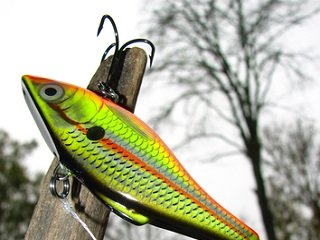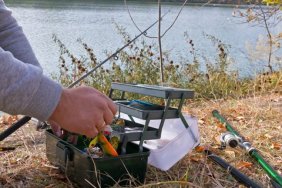 There’s an old adage among the fishing community that goes a little something like this: “If you’re not getting snagged now and then, you’re not fishing in the right spots.” As frustrating as it is when it happens—especially with a brand new lure—hang-ups are just a part of fishing. Every angler’s felt a pull on their line only realize that “big strike” was really a snag, but today we’ll explore some tips to help retrieve your lures when it happens to you.
There’s an old adage among the fishing community that goes a little something like this: “If you’re not getting snagged now and then, you’re not fishing in the right spots.” As frustrating as it is when it happens—especially with a brand new lure—hang-ups are just a part of fishing. Every angler’s felt a pull on their line only realize that “big strike” was really a snag, but today we’ll explore some tips to help retrieve your lures when it happens to you.
One of the most important truths to realize about fishing is that the areas holding the most fish are typically areas where you’re most likely to get snagged. These areas include weedbeds, lily pads, brush piles, and submerged timber. In these areas, certain lures are more likely to snag than others. For example, deep diving crankbaits used in a weedbed, or a topwater bait with treble hooks fished in lily pads are both high risks for snags. To reduce the odds of this happening, choose a lure that works best for the water conditions, such as a weedless lure or a weedless rigged hook. Fine tuning your casting accuracy will help keep you out of those pesky danger zones, as well.
Careful lure selection and precision casting won’t always keep you from getting snagged, though, so you’ll need to know how to get your lure back. When retrieving crankbaits or spinners, many anglers tend to get frustrated and overreact at the first signs of snagging. They reel in furiously, which only causes the lure to embed itself deeper into whatever it’s snagged on. Instead, you should stop reeling immediately and then make gentle attempts to dislodge the hook.
It’s also useful to know the type of snag you are in so you can take the best approach to free your lure. For instance, getting snagged among weeds is really just a test of your line and knot strength. Often times when this happens, a few quick snaps of the rod, or just a slow pull back, will free your lure. If this doesn’t work, I’d try the “bowstring” technique, which works by reeling up the slack, grabbing line between your finger and thumb, pulling it not too tight, and then letting it pop back. This works well with smaller jigs.
Snags happen, people; it’s just a part of fishing. The tips outlined above are some ways you free your lure when it’s snagged without the aid of any tools. Be sure to return for more tips on how to retrieve your snagged lure with the use of specialized equipment.








